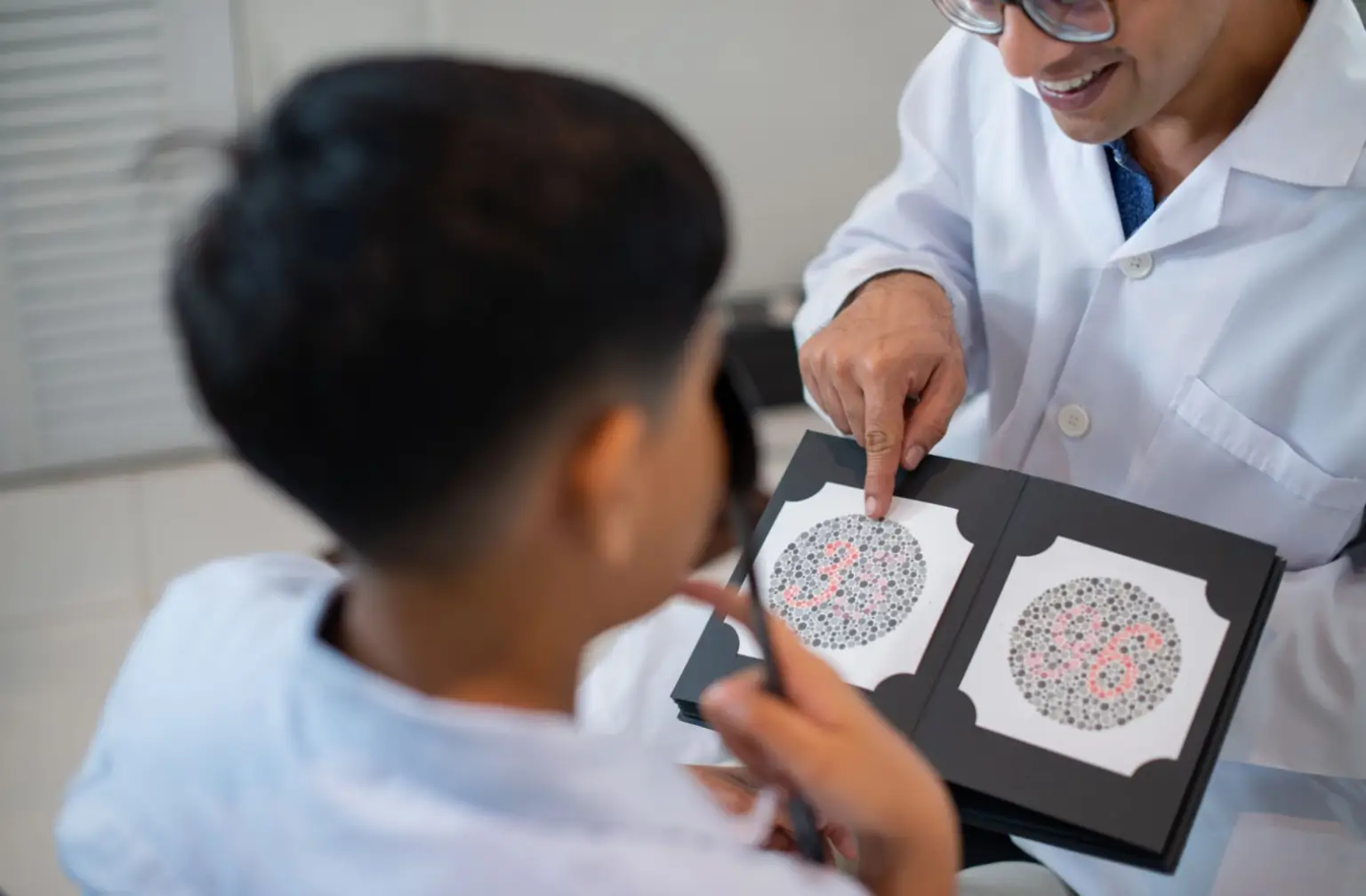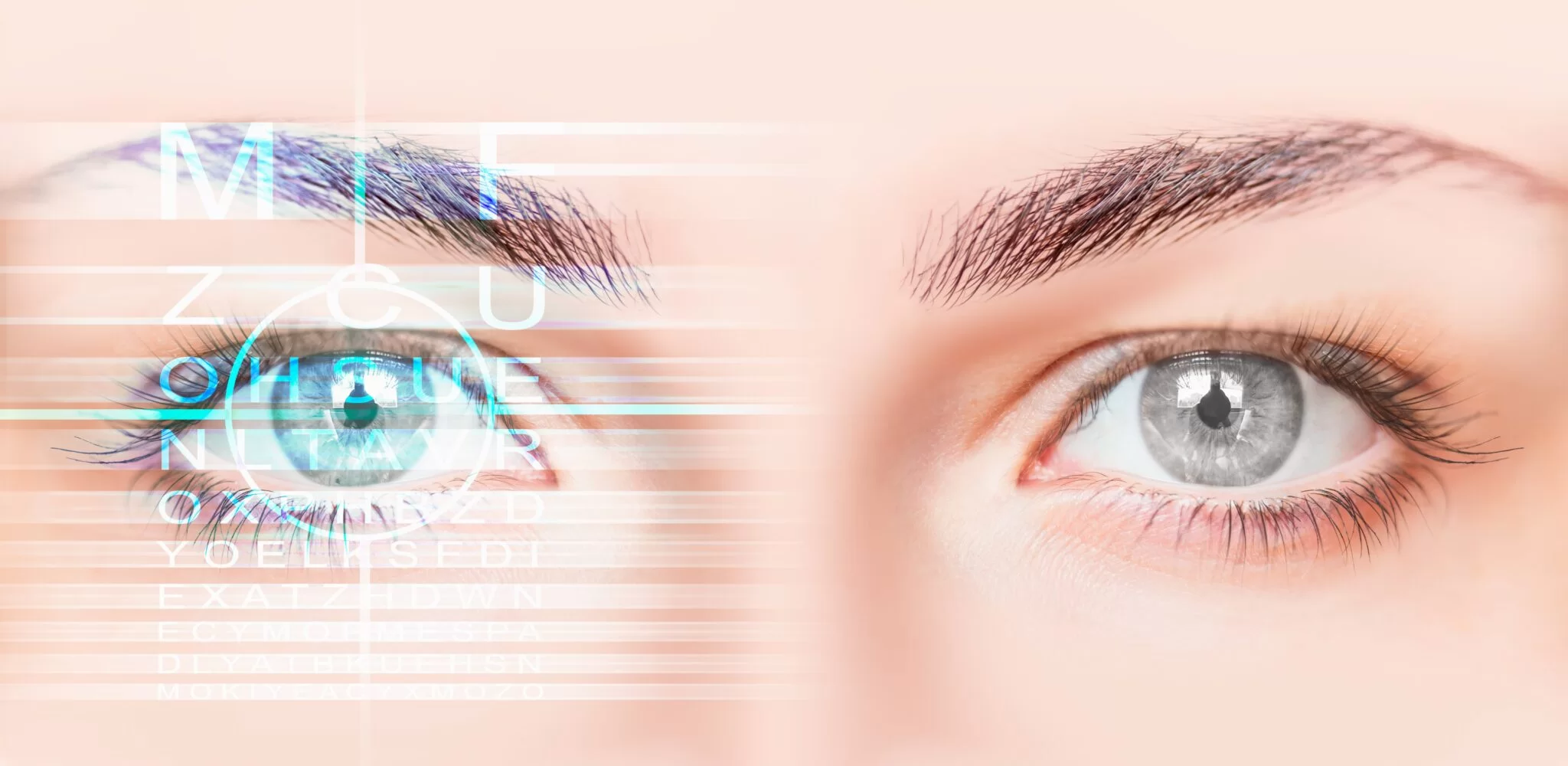QUICK APPOINTMENT FORM

What is Cornea?
The cornea is a transparent dome-shaped organ located at the front of the eye. It allows light to enter the eye and focus on the retina, enabling us to see clearly. The cornea not only allows light to pass through, but also helps to maintain the shape of the eye and protect it from infections.
The cornea can become diseased by various factors. In particular, these diseases can impair the transparency of the cornea and adversely affect our ability to see. Common corneal diseases include.
- Microcornea
- Keratitis
- Keratoconus
- Corneal Dystrophils
- Corneal Ulcer
- Conjunctivitis
- Pterygium
How are corneal diseases diagnosed?
The cornea can be exposed to many diseases and these diseases can significantly affect vision. Various methods can be used to diagnose corneal diseases. Your doctor will first use a slit lamp to examine the cornea and other parts of the eye in detail.
- Keratometry measures the curvature of the cornea.
- Pachymetry measures the thickness of the cornea.
- Corneal topography creates a map of the shape of the cornea.
- Fluorescein staining is used to reveal wounds or ulcers in the cornea.
- Tear testing is used to check for dryness of tears or other abnormalities.
Once corneal disease has been diagnosed, your doctor will discuss treatment options with you depending on the disease.
Microcornea and Treatment
Microcornea is a condition in which the cornea is smaller than normal. It is usually a congenital disease and can be passed from family to family. Microcornea can cause visual defects such as myopia and astigmatism. Treatment aims to improve visual acuity with the use of glasses or contact lenses. Surgical intervention may be required in some progressive cases.
Keratitis and Treatment
Keratitis is an inflammation of the cornea. It can be caused by various factors such as infection, injury, autoimmune diseases or allergies. Symptoms of keratitis include eye pain, redness, sensitivity to light, watering and blurred vision.
Treatment is done with antibiotics, antiviral or antifungal drugs, steroids or painkillers, depending on the cause of the infection.
Keratoconus and Treatment
Keratoconus: It is the thinning of the cornea by taking the shape of a cone and bulging forward. It causes symptoms such as blurred vision, double vision, light sensitivity and astigmatism. Depending on the stage of the disease, treatment may include surgical procedures such as contact lens wear, corneal cross-linking or corneal transplantation.
Corneal Dystrophils and Treatment
Corneal dystrophies are a group of inherited diseases that impair the transparency and function of the cornea. Depending on the type of dystrophy, symptoms may be mild or severe. Treatment options for corneal dystrophies include glasses, contact lenses, laser surgery and corneal transplantation.
Corneal Ulcer and Treatment
A corneal ulcer is an open wound that forms on the surface of the cornea. It can be caused by various factors, including infection, injury or chemical burns. Symptoms of corneal ulcer include the following.
- Severe eye pain
- Redness
- Blurred vision
- Sensitivity to light
- Discharge from the eye
Corneal ulcer is a serious condition that requires urgent medical attention. If left untreated, it can lead to blindness. Treatment includes antibiotics, antiviral or antifungal drugs, depending on the type of infection. Steroid eye drops may also be used to relieve pain and reduce inflammation.
In some cases, surgical intervention may be required to repair the corneal ulcer.
Conjunctivitis and Treatment
Conjunctivitis is inflammation of the membrane covering the white part of the eye (conjunctiva). It can be caused by various factors, including bacterial, viral or allergic infections. Treatment options vary depending on the type of conjunctivitis.
Bacterial conjunctivitis is treated with antibiotic eye drops or ointments. Viral conjunctivitis usually goes away on its own, but over-the-counter medications can be used to relieve symptoms.
Allergic conjunctivitis is treated by avoiding the substance that triggers the allergy and using antihistamine eye drops or ointments.
Pterygium and Treatment
Pterygium is an abnormal growth of the conjunctiva towards the cornea. It can cause redness, irritation and blurred vision. Pterygium usually develops as a result of exposure to sunlight. There are several options for treating pterygium, including eye drops, ointments and surgery.
Eye drops and ointments can help relieve symptoms, but they cannot stop the pterygium from growing. Surgery is used to remove the pterygium and prevent it from growing again.
Cornea transplant
Corneal transplantation is the process of replacing a damaged or diseased cornea with a cornea from a healthy donor. It is an effective method for restoring or significantly improving vision loss.
Corneal transplantation can be applied in various diseases such as keratoconus, microcornea, corneal injuries, infections and dystrophies.


















